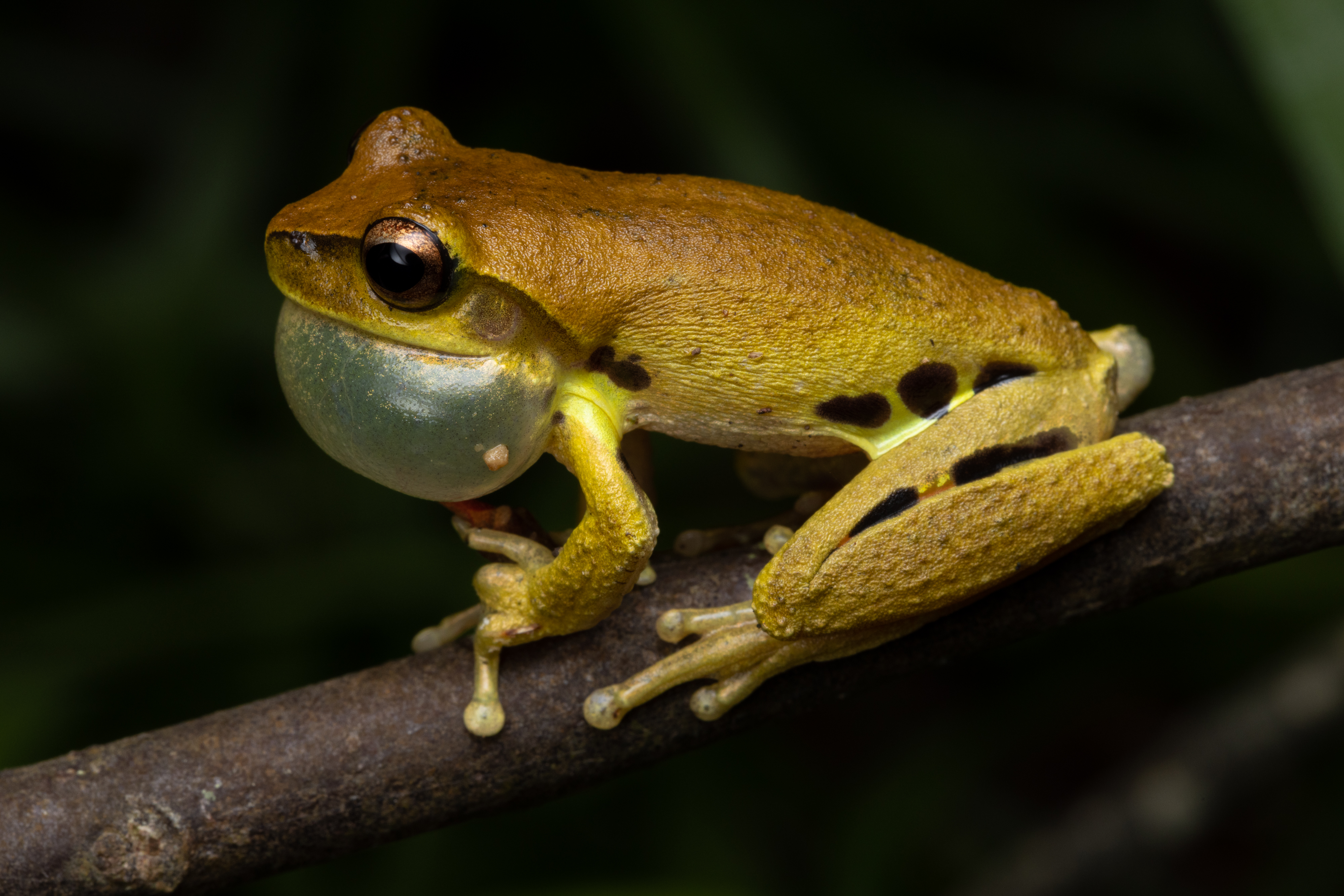Media release
From: The University of NewcastleTwo newly discovered species of Australian frogs may be unable to adapt to the escalating impacts of climate change, raising urgent conservation concerns from scientists.
The research, published in the international journal Zootaxa, has identified two new species of Whirring Tree Frogs that show no evidence of adapting to the gradual climate warming and drying across the Australian continent. These frogs now survive only in isolated, cool, and moist upland environments, with little to no opportunity to shift habitats as temperatures rise.
Co-author from the University of Newcastle, Emeritus Professor Michael Mahony, emphasised the broader implications of the findings.
“The mantra of ‘adapt or perish’ doesn’t equally apply across species,” Professor Mahony said.
“The frogs are literally running out of space. Isolated on mountaintops, with climate models predicting warmer and drier conditions, they have nowhere left to go.”
The newly discovered Eungella Whirring Frog (Litoria eungellensis) inhabits a mere 20 square kilometres in the cool montane temperature forest of Queensland’s Engella Range, only above 900 metres elevation. It is separated by hundreds of kilometres from its nearest relative, the Atherton Whirring Frog (Litoria corbeni), which also resides solely in high-altitude rainforest.
Lead author of the paper, Luke Price from South Australian Museum, is a former Honours student at the University of Newcastle where he undertook the research.
Price observed that the unusual distribution and genetic divergence between the species “provides important information about Australia’s climate in the past and how that has moulded the current distribution of the frog.”
Price proposed that because the Whirring Tree Frog occurs only in wet forest habitats “it must once have occupied wet forest habitats that were interconnected along the Great Dividing Range from north-eastern NSW to the Atherton Tablelands at a time of cooler and moister climate than we experience at present.
“We are not talking about climate warming associated with human impacts and the greenhouse effect, but much older changes associated with movement of the continents and global weather circulation,” Price said.
The study revealed that the two species of frogs, despite their similar appearances—bright mustard yellowish bodies with red patches hidden behind their legs—have been evolving separately for at least 1.5 million years. Subtle differences in their mating calls and genetic analyses confirmed their distinct evolutionary paths.
The conservation outlook for the newly recognised species is concerning.
“The Eungella Whirring Frog now holds the unenviable title of one of Australia’s top ten frogs with the smallest natural range,” Price stated.
“Species confined to such tiny areas face immense risks—from wildfires to pollution events. One catastrophic event could wipe them out entirely.”
Price further explained, “the observation that the species is restricted to an isolated patch of high elevation cool rainforest habitat suggests that it is already living at its biological limits, and with climate warming the species has nowhere to expand or migrate.” A similar situation occurs for the Atherton species, but it has a slightly larger distribution.
Both the Eungella and Atherton Whirring Frogs meet the International Union for Conservation of Nature’s criteria for being listed as “Critically Endangered,” primarily due to their limited distributions and the mounting threat of climate change.
“These frogs are already living at their biological limits,” Mahony said.
“With nowhere to migrate, their survival hinges on proactive conservation efforts.”
Meanwhile, the more widespread Litoria revelata found in New South Wales and southeastern Queensland appears less threatened. However, Price cautions, “the apparent stability of Litoria revelata might be more because there is no formal surveillance for this species and his assessment that it is not threatened is based on observations from interested biologists and community scientists only.”
This discovery highlights the pressing need to understand and mitigate the impacts of climate change on vulnerable species.
Professor Mahony said we need to recognise that not all species can adapt quickly enough.
“Targeted conservation and habitat protection are essential to prevent these unique frogs from vanishing forever.”
The study was in collaboration with scientists from the University of Newcastle, the South Australian Museum, and James Cook University.


